Using the data compiled from the XTX360 thermal testing I have compiled the following tables in an attempt to show other ways of how the XTX performance varies against itself at the flow rates and fan speeds tested. First let’s look at the raw W/10DT data we’ll be using for these comparisons:
Effectively these show percentage gains relative to a reference point. It’s an interesting way to show gains/losses while changing a variable. This first table shows performance gain or loss relative to 1.0GPM flow rate:
The performance gain from 1.0 to 1.5 GPM was greater than expected indicating that the XTX may prefer high flow rates to yield better performance.
We can also focus on 1300RPM as our reference and see how much gain or loss in performance we get by changing fan speed:
As expected the change is dramatic. How about we combine both flow rate and fan speed as reference points and have a look at 0.5gpm & 750 RPM as the reference point:
Lastly, we change the reference and choose our center 1300 RPM and 1.0 GPM as our reference point to show both effects concurrently:
So from the data above we can get a very good idea of how the XTX360 radiator performs relative to itself. But there is a large selection of 360mm radiator models to choose from, released from numerous manufacturers. So, we need to start comparing performance between them. To see how the XTX performed against the other radiators tested, I have included the averaged flow rate comparison charts from the Round Up. We know that the flow rate has little impact on thermal performance so averaging of the 3 flow rate results gives us a good look at head to head performance at the rpm speeds tested at with even less error.
Let’s first take a look at the push data:
AT 750RPM the XTX has a respectable start for a thick radiator.
At 1300 RPM it’s in 2nd place – only beaten by it’s replacement – the XE.
At 1850RPM the story remains the same. Without the XE the XTX looks amazing. But somehow the XE improves on it considerably.
Now let’s look at Push/Pull:
Again the XTX struggles a bit at 750 RPM but still turns in a respectable score.
At 1300 RPM we again see the XTX start to up it’s performance. But it’s beaten out by the Black Ice and Koolance radiators that are both designed with high FPI and high airflow in mind.
At 1850 RPM the XTX trails off a bit further as it edges out of it’s sweet spot.
From all of these results we can create a “master performance factor”. The radiator with the best cooling ability (W/10ΔT) at each gpm/rpm combo was awarded a score of 100, and each other radiators W/10ΔT result was scored as percentage of the top performer:
All those high numbers again confirm the XTX as a fantastic all-rounder. While never finishing first place in any of the test combos, it was never far behind the category winners.
Then all these percentage scores were averaged giving us the Averaged Performance Factor of each radiator. This way of looking at the comparison takes away any advantages that a radiator may have at higher or lower fan speeds and looks at an overall average. While this appears fair it does tend to favor those radiators that are all-rounders and those radiators which do very well at high RPM. Most users should be more focused on their specific use case. Check in the Round Up for performance comparisons at every gpm/rpm combo for even more details and cross comparison results.
Again, let’s start with the push only data:
The XTX performs amazingly well for an older design. It’s only beaten out by two of the latest designs – one from EK which is to replace it. For Push/Pull the story is still good, thought not quite as sweet:
A score of 93.9 puts in 4th position. Excellent given that two of the competition are radiators that are very well tuned for high airflow and push/pull.
Next up – Summary!







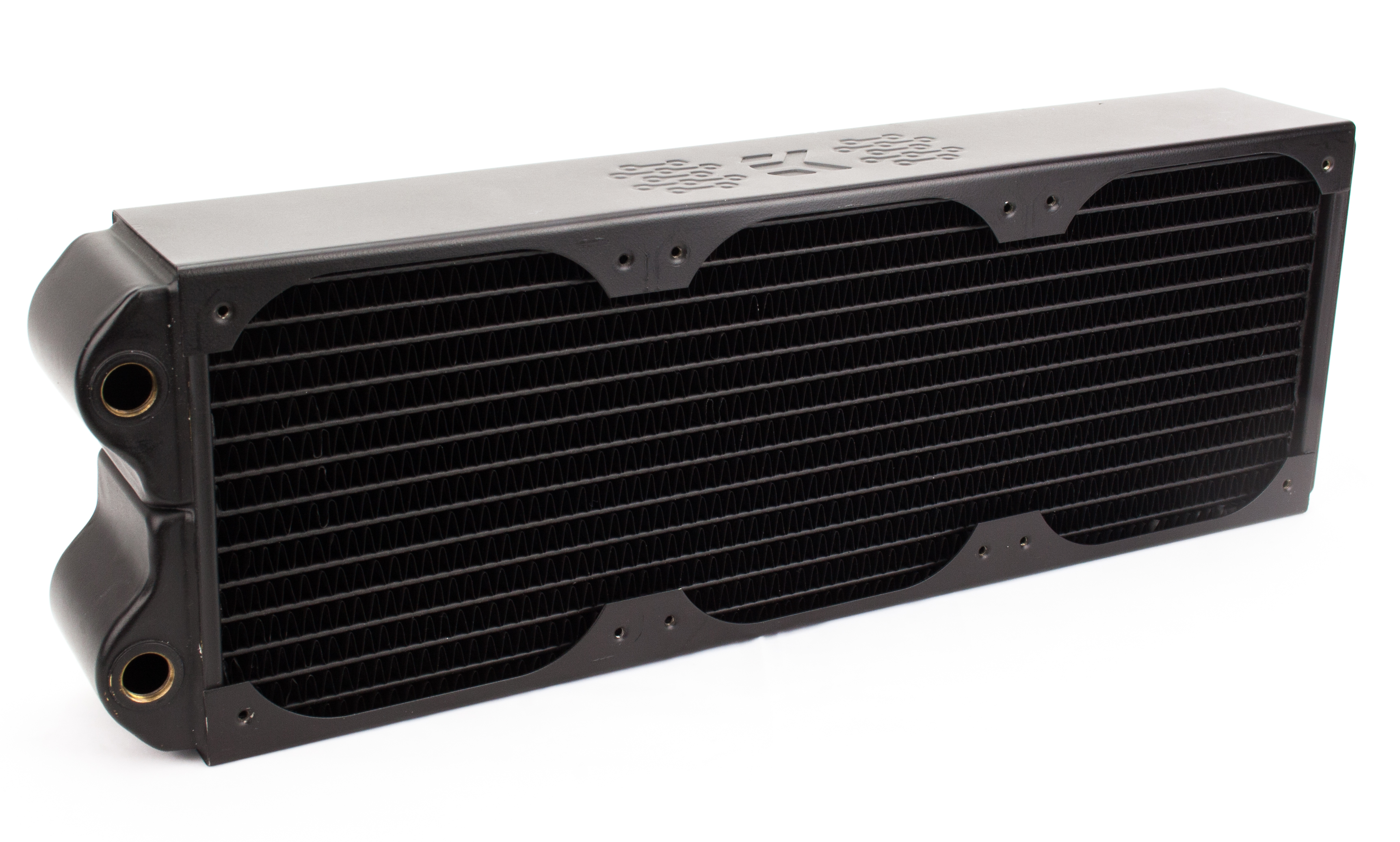
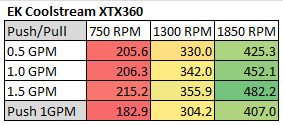
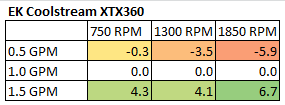
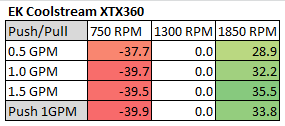
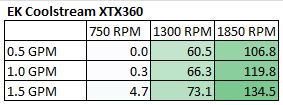
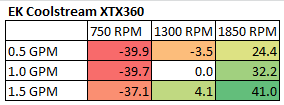
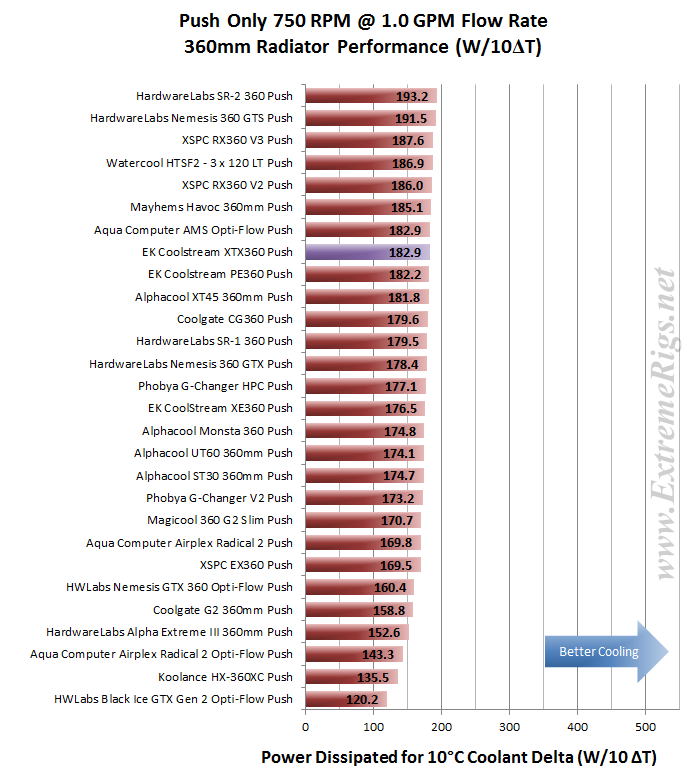
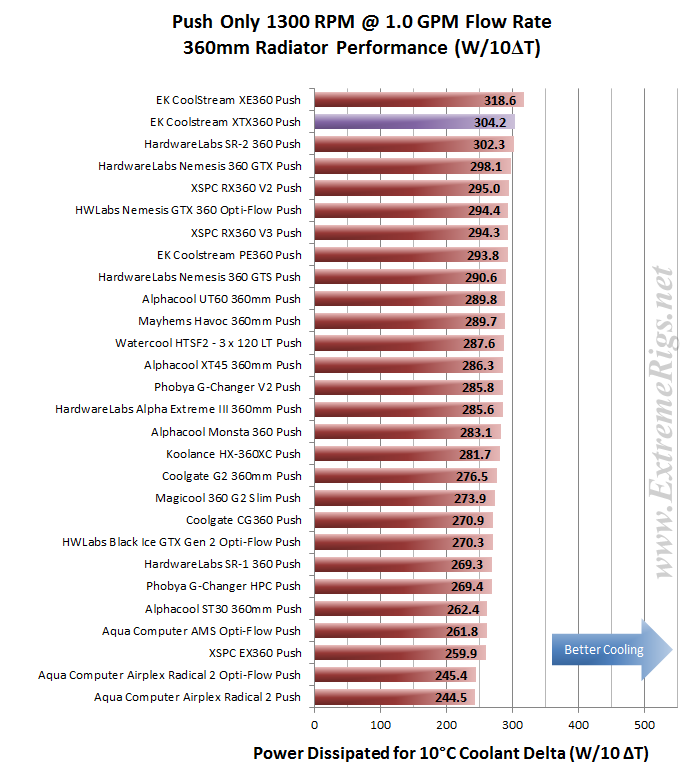
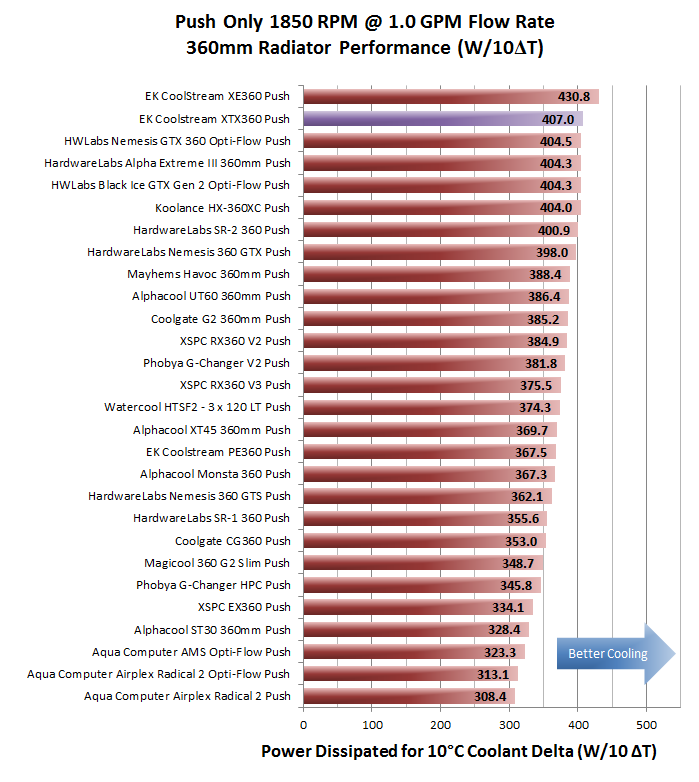
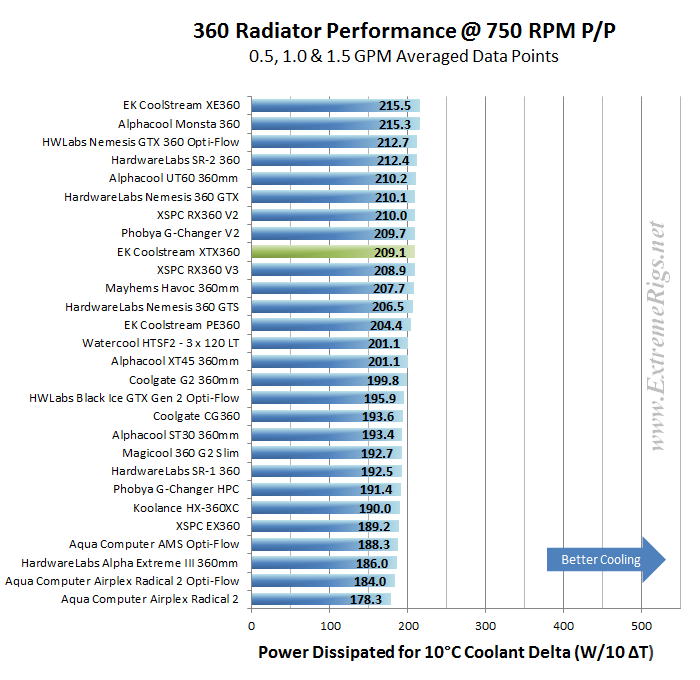
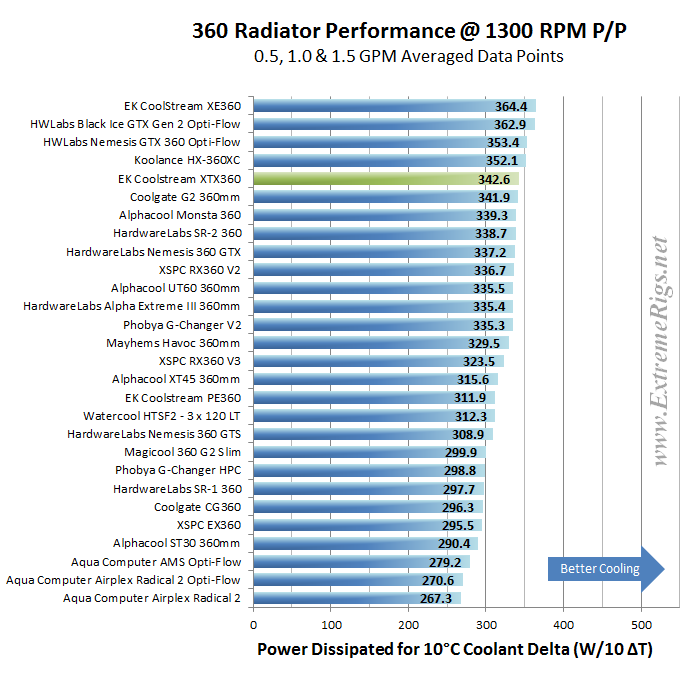
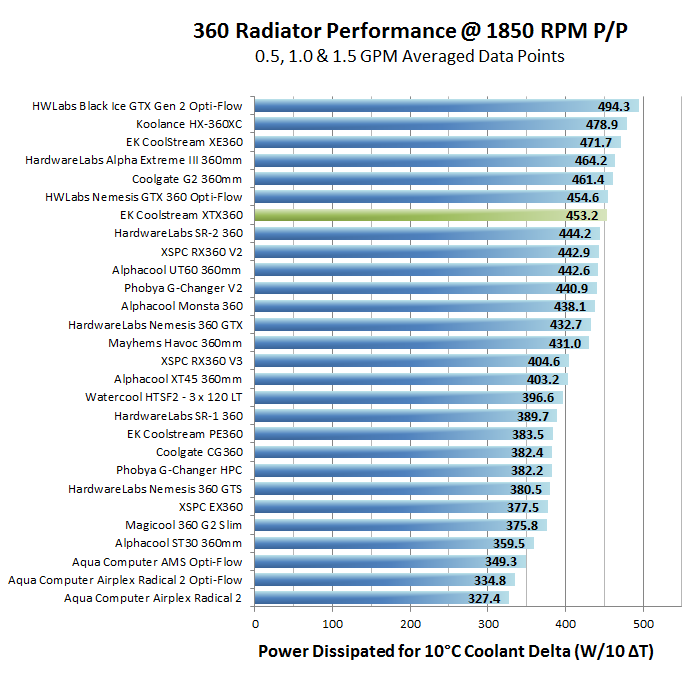
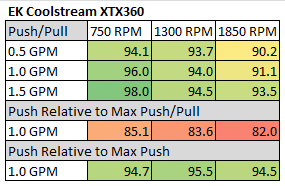
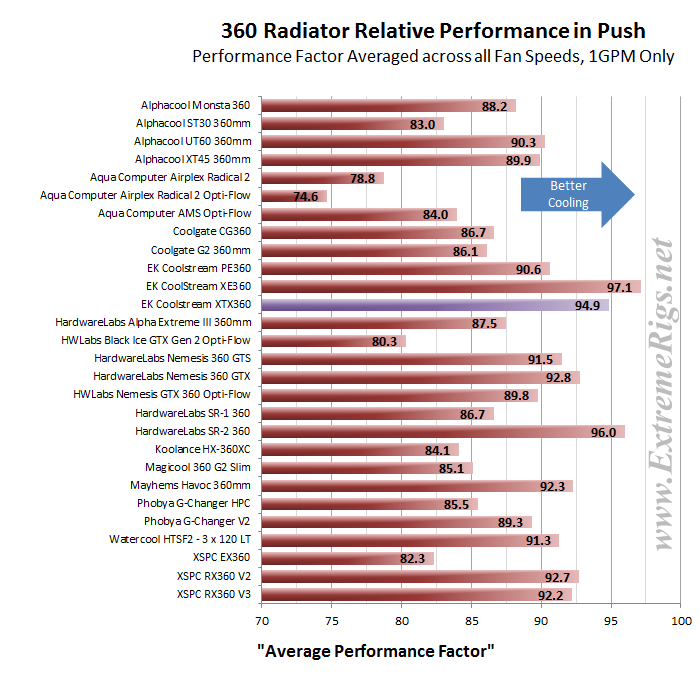
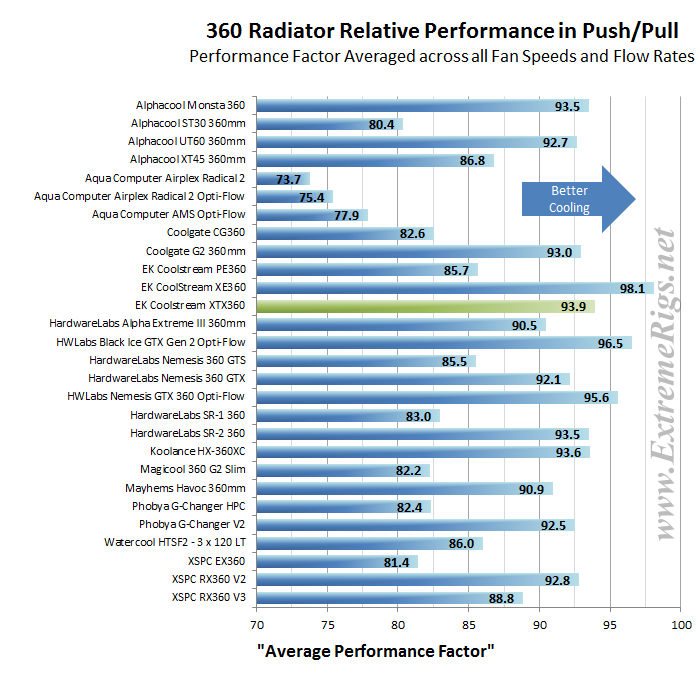



Just a heads up, this rad is now apparently discontinued
https://www.ekwb.com/shop/eol/radiators-fans-accessories/radiators/ek-coolstream-xtx-series/ek-coolstream-rad-xtx-360.html
[…] Copper 360 Radiator AquaComputer AMS 360 Radiator Coolgate CG 360 Radiator EK SE 360 Radiator EK XTX 360 Radiator EK XE 360 Radiator Hardware Labs Black Ice GTX 360 Radiator Hardware Labs SR2 360 Radiator Phobya […]
Comments are closed.